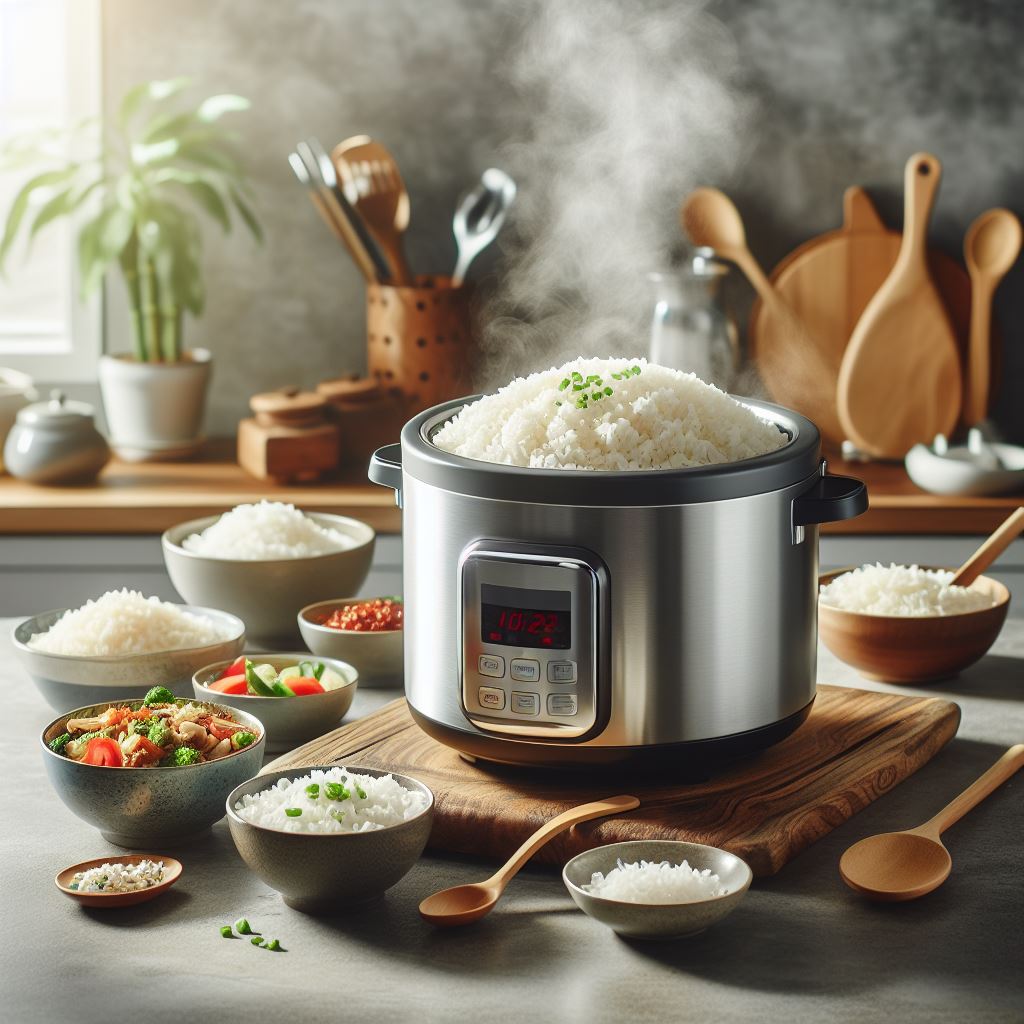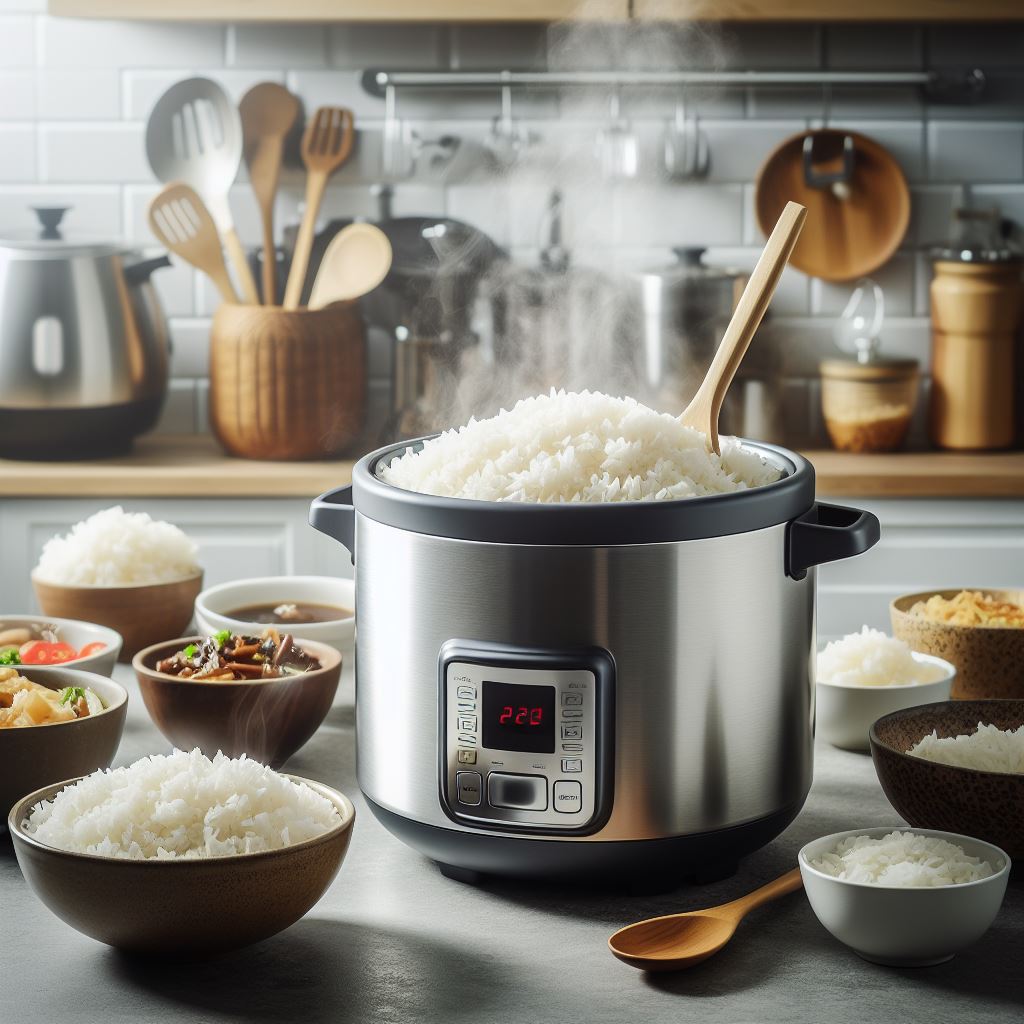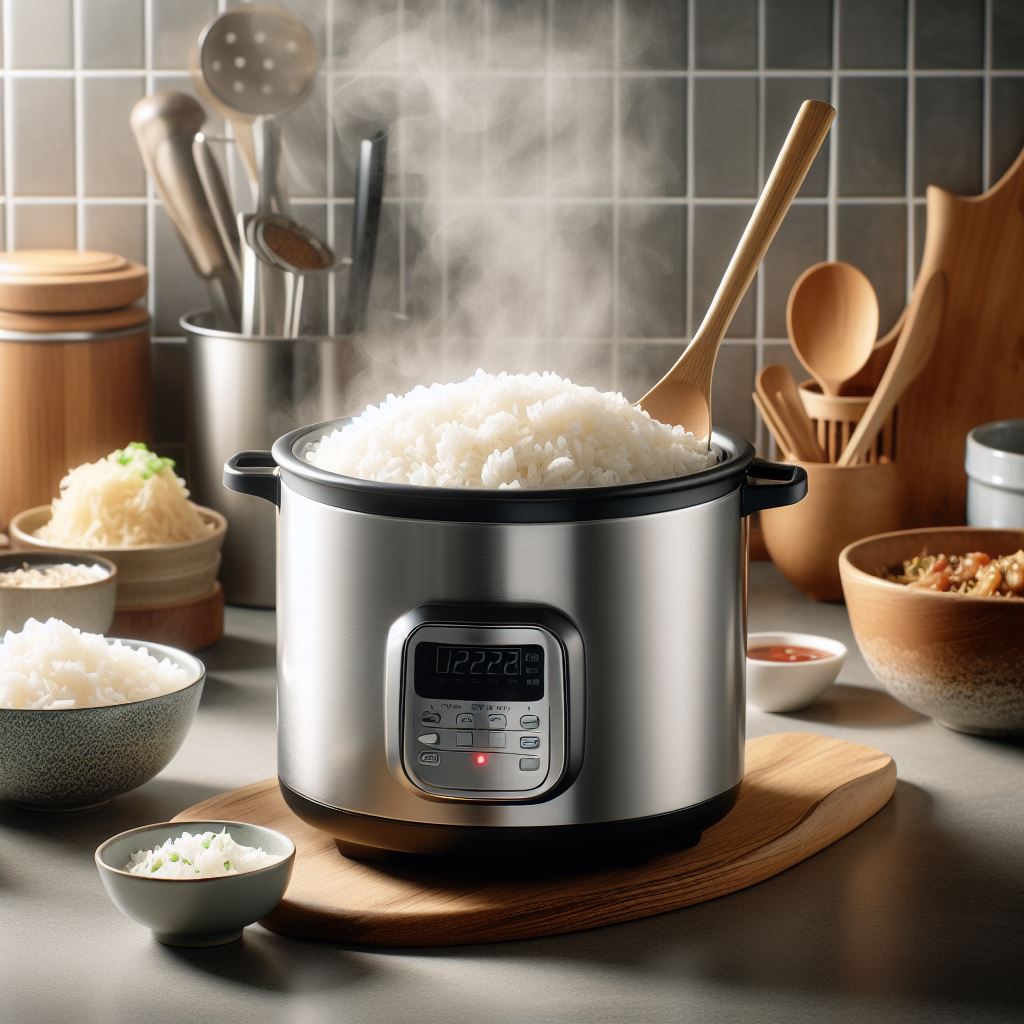The first electric rice cooker was invented in Japan in the 1950s and has since undergone significant advancements. Modern rice cookers feature programmable settings, fuzzy logic technology, and various cooking modes to cater to different types of rice and cooking preferences. MLCCs play a crucial role in ensuring the smooth operation of these advanced features.
MLCCs are electronic components used in the circuitry of rice cookers to regulate voltage, filter noise, and improve the overall efficiency of the appliance. These capacitors are chosen for their high capacitance, small size, and reliability, making them ideal for use in compact and high-performance devices like rice cookers.

Role of MLCCs in Rice Cookers
Multilayer Ceramic Capacitors (MLCCs) play a crucial role in the functionality and performance of rice cookers. These small but powerful components are used in various parts of the rice cooker’s circuitry to ensure smooth operation and reliable performance. Let’s explore the specific roles of MLCCs in rice cookers:
Voltage Regulation
MLCCs are used in voltage regulation circuits within rice cookers to stabilize the voltage supplied to different components. This is crucial for ensuring that the heating element, thermostat, and other parts of the rice cooker receive the correct voltage for optimal performance. MLCCs help prevent voltage spikes and fluctuations that could potentially damage the appliance.
Noise Filtering
Rice cookers, like many other electronic devices, generate electrical noise during operation. MLCCs are used to filter out this noise, ensuring that the signals within the circuit remain clean and stable. This is particularly important for rice cookers with advanced features like programmable settings and fuzzy logic technology, where accurate signal processing is essential.
Circuit Protection
MLCC also plays a role in protecting the rice cooker’s circuitry from electrical surges and other forms of damage. By acting as a buffer against sudden changes in voltage or current, MLCCs help prevent components from being overloaded or damaged, ensuring the longevity of the appliance.
Capacitance and Size
One of the key advantages of MLCCs in rice cookers is their high capacitance-to-size ratio. This means that MLCCs can provide the necessary capacitance for voltage regulation and noise filtering while occupying a minimal amount of space in the appliance. This is particularly important in compact rice cookers where space is limited.
Reliability and Longevity
MLCCs are known for their reliability and longevity, making them ideal for use in rice cookers. These capacitors are designed to withstand high temperatures and continuous operation, ensuring that they can handle the demanding conditions of a rice cooker’s circuitry without failing prematurely.
MLCC Specifications for Rice Cookers
Multilayer Ceramic Capacitors (MLCCs) used in rice cookers are selected based on specific specifications to ensure optimal performance and reliability. These specifications determine the capacitance, voltage rating, size, and other characteristics of the MLCC. Let’s explore the key MLCC specifications for rice cookers:
Capacitance
The capacitance of an MLCC is one of the most important specifications for rice cookers. It determines the amount of charge the capacitor can store and thus affects its ability to regulate voltage and filter noise. The capacitance of MLCCs used in rice cookers typically ranges from a few nanofarads to several microfarads, depending on the specific application.
Voltage Rating
The voltage rating of an MLCC indicates the maximum voltage that the capacitor can safely withstand. In rice cookers, MLCCs are often exposed to high voltages, especially in heating elements and other high-power components. Therefore, MLCCs used in rice cookers must have a voltage rating that exceeds the maximum voltage expected in the circuit.
Size
The size of an MLCC is determined by its capacitance and voltage rating. In rice cookers, where space is often limited, compact MLCCs are preferred. Manufacturers often choose MLCCs with high capacitance-to-size ratios to minimize the space occupied by these components in the appliance.
Temperature Coefficient
The temperature coefficient of an MLCC indicates how its capacitance changes with temperature. In rice cookers, which are exposed to high temperatures during operation, MLCCs with a stable temperature coefficient are preferred to ensure consistent performance across a wide temperature range.
Dielectric Material
The dielectric material used in MLCCs also plays a role in their performance. For rice cookers, MLCCs with a high dielectric constant are preferred, as they can store more charge per unit volume, leading to higher capacitance in a smaller package.
MLCC Reliability in Rice Cookers
Reliability is a critical factor in the design and manufacture of rice cookers, and Multilayer Ceramic Capacitors (MLCCs) play a crucial role in ensuring the reliability of these appliances. MLCCs are used in various parts of a rice cooker’s circuitry, and their reliability directly impacts the overall performance and longevity of the appliance. Let’s explore the factors that contribute to the reliability of MLCCs in rice cookers:
Temperature Resistance
Rice cookers operate at high temperatures, especially in the vicinity of the heating element. MLCCs used in rice cookers must be able to withstand these high temperatures without degrading or failing. Manufacturers select MLCCs with high-temperature ratings to ensure that they can perform reliably under these conditions.
Electrical Stability
MLCCs used in rice cookers must be electrically stable, meaning that their capacitance, voltage, and other electrical characteristics remain consistent over time and under varying operating conditions. This ensures that the rice cooker operates reliably and efficiently throughout its lifespan.
Vibration and Shock Resistance
Rice cookers are subject to vibrations and shocks during operation, especially if they are moved or transported frequently. MLCCs used in rice cookers must be able to withstand these mechanical stresses without cracking or breaking, which could lead to circuit failure.
Longevity
MLCCs are expected to have a long lifespan, matching the expected lifespan of the rice cooker itself. Manufacturers select MLCCs with a reputation for longevity and reliability to ensure that the rice cooker remains operational for many years without needing repair or replacement.
Quality Control
Manufacturers of rice cookers implement strict quality control measures to ensure that the MLCCs used in their appliances meet the highest standards of reliability. This includes testing the MLCCs for electrical performance, temperature resistance, and mechanical durability before they are integrated into the rice cooker’s circuitry.
MLCC Applications Beyond Rice Cookers
Multilayer Ceramic Capacitors (MLCCs) are versatile components that find applications beyond rice cookers. Their high capacitance, small size, and reliability make them ideal for use in various electronic devices and appliances. Let’s explore some of the other potential applications of MLCCs:
Kitchen Appliances
MLCCs are used in a variety of kitchen appliances, including microwave ovens, coffee makers, and toaster ovens. They play a crucial role in regulating voltage, filtering noise, and ensuring the smooth operation of these appliances.
Home Entertainment Systems
MLCCs are used in home entertainment systems, such as TVs, soundbars, and gaming consoles, to improve audio and video quality. They are also used in remote controls and wireless headphones to enhance performance and reliability.
Automotive Electronics
MLCCs are extensively used in automotive electronics, including engine control units, airbag systems, and infotainment systems. They help improve the efficiency, performance, and safety of vehicles.
Industrial Equipment
MLCCs are used in various industrial equipment, such as power supplies, motor drives, and control systems. They help improve the efficiency and reliability of these systems, leading to cost savings and increased productivity.
Medical Devices
MLCCs are used in medical devices, such as MRI machines, patient monitors, and infusion pumps. They play a crucial role in ensuring the accuracy and reliability of these devices, which are critical for patient care.

Maintenance and Care of MLCCs in Rice Cookers
Proper maintenance and care of Multilayer Ceramic Capacitors (MLCCs) in rice cookers are essential to ensure their longevity and reliable performance. MLCCs are critical components in the circuitry of rice cookers, and neglecting their maintenance can lead to issues such as voltage spikes, noise interference, and circuit failure. Here are some tips for maintaining and caring for MLCCs in rice cookers:
Avoid Physical Damage
MLCCs are sensitive components that can be damaged by physical stress, such as bending, twisting, or dropping. Handle the rice cooker with care to avoid putting undue stress on the MLCCs.
Keep the Rice Cooker Clean
Dust, dirt, and other contaminants can accumulate on the surface of MLCCs, affecting their performance. Regularly clean the exterior of the rice cooker with a soft, dry cloth to prevent dust buildup.
Ensure Proper Ventilation
MLCCs generate heat during operation, and proper ventilation is essential to prevent overheating. Ensure that the rice cooker is placed in a well-ventilated area and that the vents are not blocked by any objects.
Avoid Excessive Moisture
Moisture can damage MLCCs and other electronic components. Avoid placing the rice cooker near sources of moisture, such as sinks or stoves, and ensure that the rice cooker is dry before use.
Check for Signs of Damage
Regularly inspect the MLCCs and other components in the rice cooker for signs of damage, such as cracks, discoloration, or bulging. If you notice any damage, replace the affected components promptly to prevent further issues.
Follow Manufacturer’s Instructions
Always follow the manufacturer’s instructions for maintaining and caring for your rice cooker. These instructions will provide specific guidelines for ensuring the optimal performance and longevity of the MLCCs and other components.
Q&A: Common Questions About MLCCs in Rice Cookers
Multilayer Ceramic Capacitors (MLCCs) play a crucial role in the operation of rice cookers, but their function and importance may not be well understood by everyone. Here are some common questions about MLCCs in rice cookers, along with their answers:
Q: What is the purpose of MLCCs in rice cookers?
A: MLCCs are used in rice cookers to regulate voltage, filter noise, and improve the efficiency of the appliance. They help ensure that the rice cooker operates safely and reliably.
Q: Are MLCCs in rice cookers different from those used in other appliances?
A: While the basic function of MLCCs remains the same across different appliances, the specifications may vary depending on the application. MLCCs used in rice cookers are typically chosen for their high-temperature tolerance and reliability.
Q: Can MLCCs in rice cookers be replaced if they fail?
A: Yes, MLCCs in rice cookers can be replaced if they fail. However, it is recommended to consult a professional technician to ensure that the replacement is done correctly and safely.
Q: How can I tell if an MLCC in my rice cooker has failed?
A: Signs of a failed MLCC in a rice cooker may include erratic behavior, such as the rice cooker not turning on or not cooking rice properly. If you suspect that an MLCC has failed, it is best to have the rice cooker inspected by a professional technician.
Q: Can I prevent MLCC failure in my rice cooker?
A: While it is not possible to completely prevent MLCC failure, you can take steps to reduce the risk. These include avoiding physical stress on the rice cooker, keeping it clean and dry, and ensuring proper ventilation.
Q: Are there any safety concerns associated with MLCCs in rice cookers?
A: MLCCs are designed to operate safely in rice cookers. However, it is essential to follow the manufacturer’s instructions for proper use and maintenance to ensure their safe operation.

